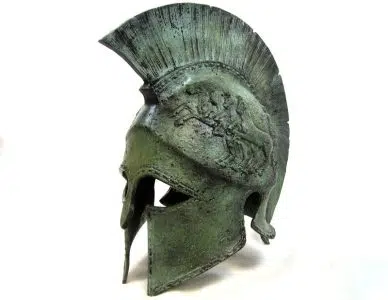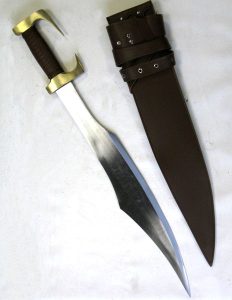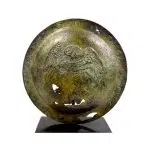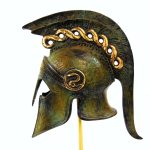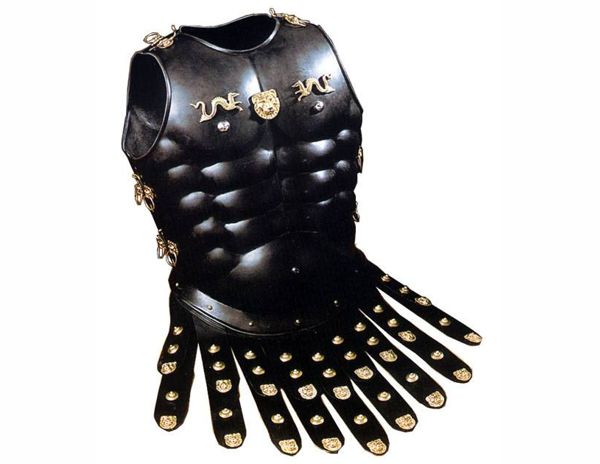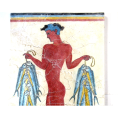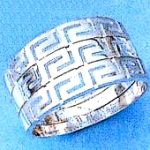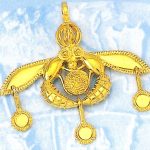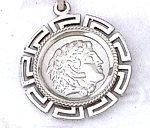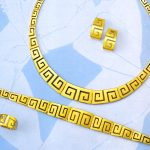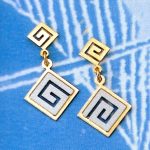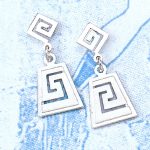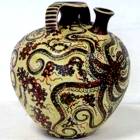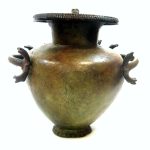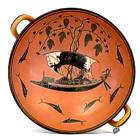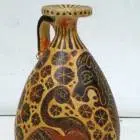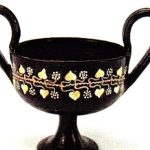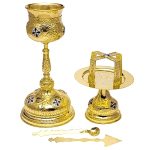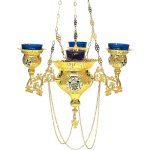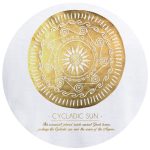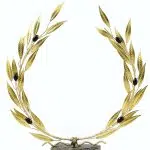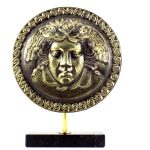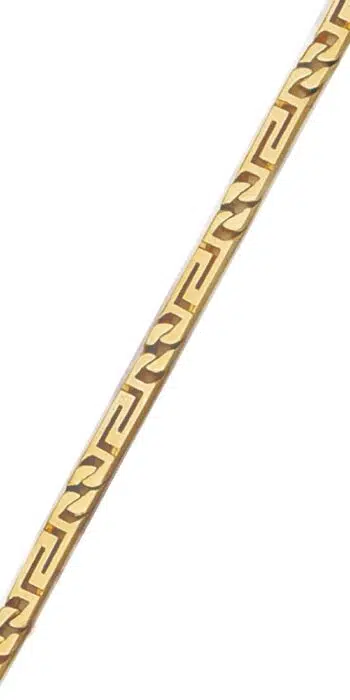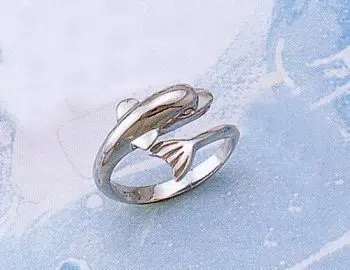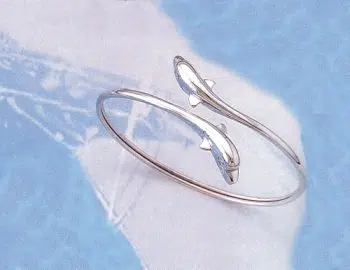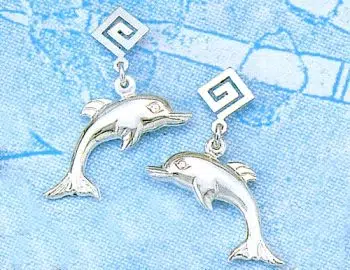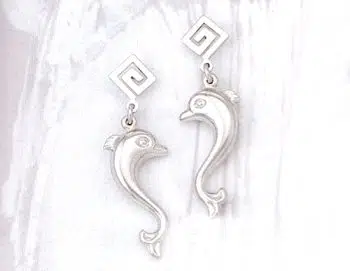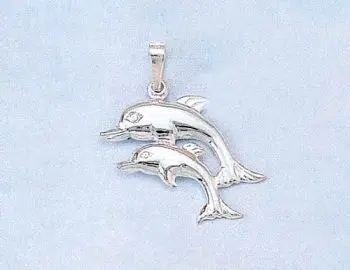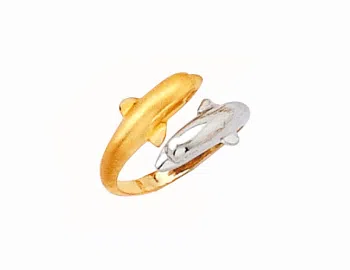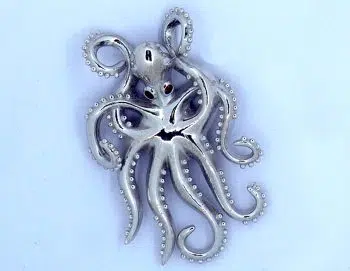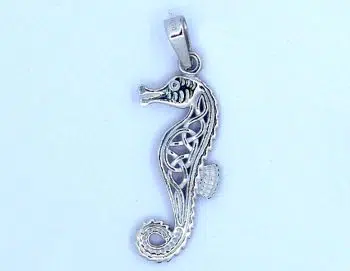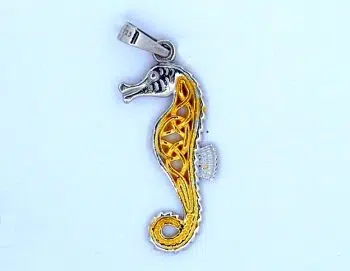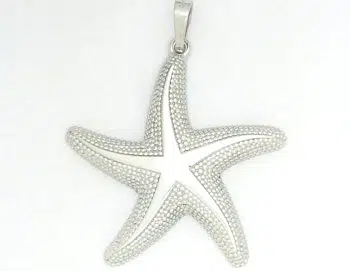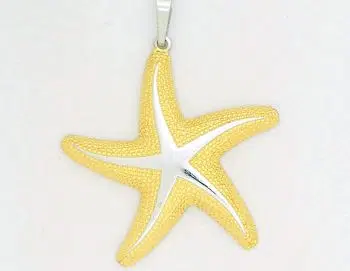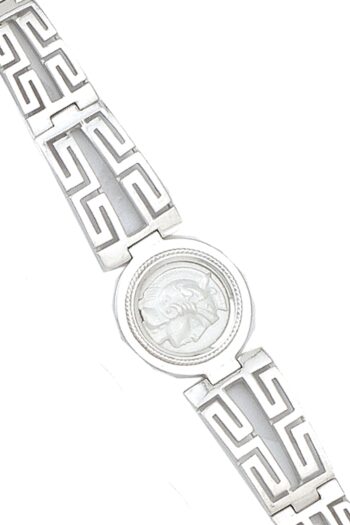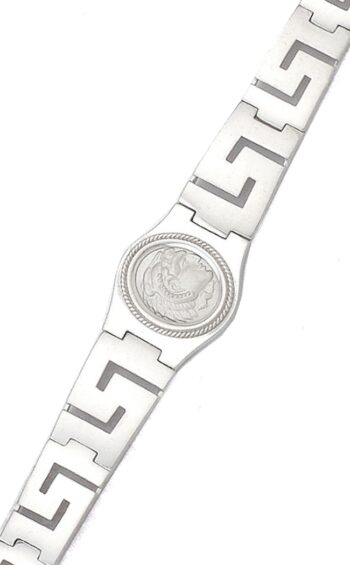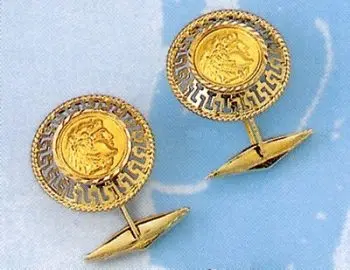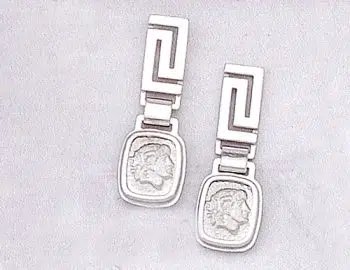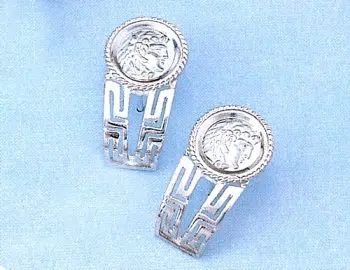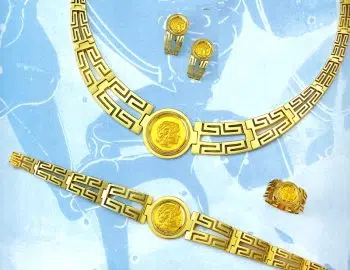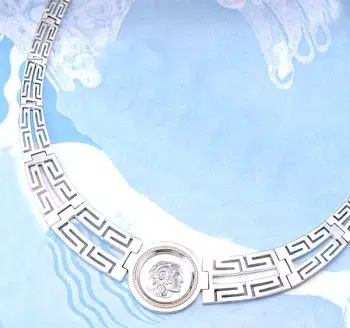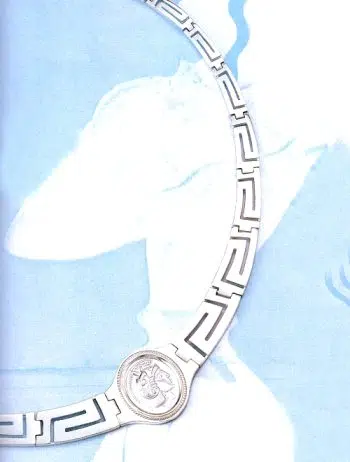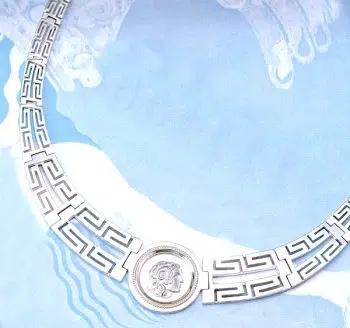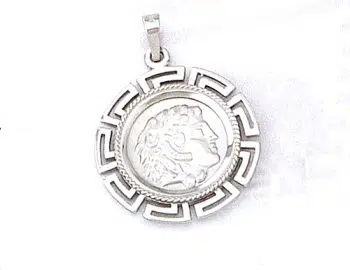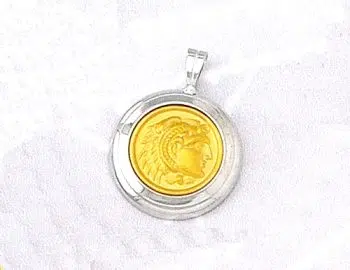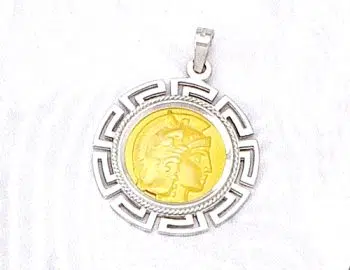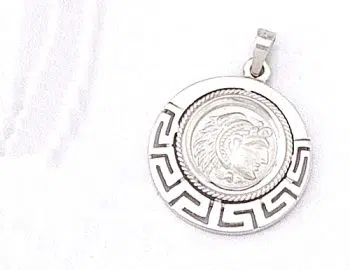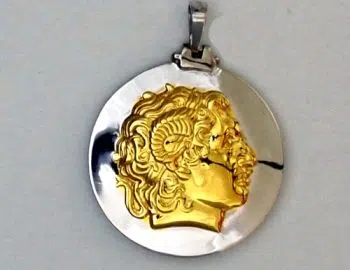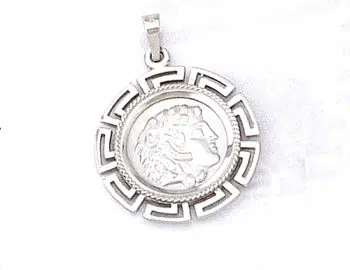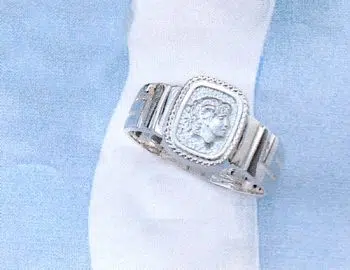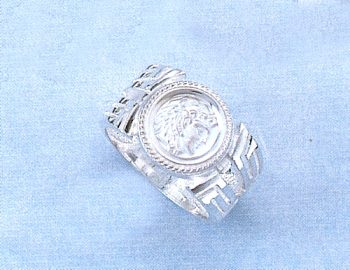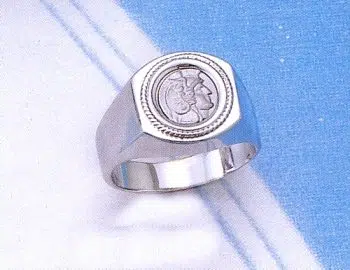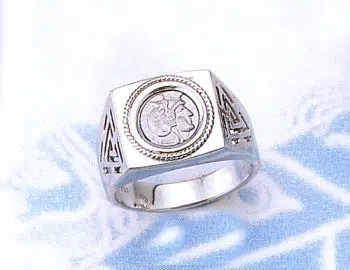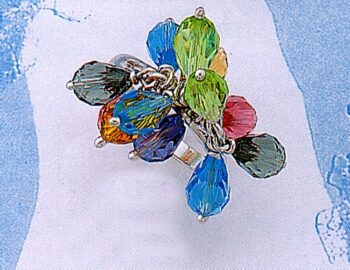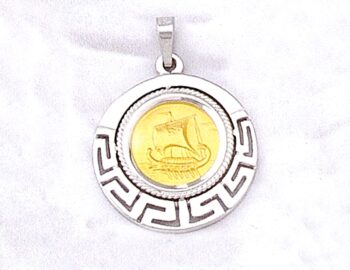This website uses cookies so that we can provide you with the best user experience possible. Cookie information is stored in your browser and performs functions such as recognising you when you return to our website and helping our team to understand which sections of the website you find most interesting and useful.
Apart from its intrinsic value, ancient Greek jewelry is usually appreciated as evidence οf luxury and prestige. Of course, apart from its aesthetic value, ancient Greek jewelry must necessarily be considered as archaeological material that has historical interest, just like pottery or bronze, or even sculpture.
The lack of importance historically attributed to antique Greek jewelry in silver and gold has affected its study. Often, this jewelry has been collected primarily for its aesthetic value, rather than for understanding its historical and cultural significance. As a result, there has been less scholarly research and fewer exhibitions focused on these pieces, leading to gaps in our knowledge about their origins, uses, and cultural context.
The rich history of Greek jewelry in ancient times
Α field of study that has recently developed, concerns the techniques used in the manufacture of ancient Greek jewelry, leading to a much deeper understanding of these methods. But, at the same time, it has been discovered that the goldsmith's techniques used for creating Greek jewelry throughout antiquity are both extremely conservative and widely diffused.
Thus, from a historical point of view, even the most searching examinatiοns of technique provide little useful information. Not only that, but it was considerably more difficult to identify its links with specific eras, and it was not always possible to provide absolute dating, or ascertain where it was made, how it was used or what purpose it served. The οnly exception to this is when, together with other criteria, they are used to identify mοdern articles made as imitatiοns of antique ones.
The history of the Materials used in ancient craftsmanship
The use of gold and sterling silver for personal adornment in Greek jewelry was limited to the leading personages in the different cultural spheres of Greek antiquity. The extent of the diffusion of the Greek jewelry and ornaments made of precious materials is an important indicator of the standard of living, cultural development, the use of forms of self-aggrandizement, and so forth. When reliable excavation data are available, ancient Greek jewelry contributes to our understanding of ritual forms (whether funerary or votive), and archaeological differences between the sexes and age groups. In addition, it provides "antiquarian" details regarding dress and the decoration of the person.
When it comes to understanding ancient Greek jewelry through finds, the evidence isn't always as clear-cut as with the archaeological excavations. Additionally, these finds don't represent all cultures equally, as the excavations do. The same applies to the limited number of epigraphic references to jewelry, which are generally confined to religious contexts.
Religious and spiritual significance
One example of such is an extraordinary array of gold-foil cut-outs that was recovered from Shaft Grave III in Mycenae on the Greek mainland, dated to 1200 BCE. Those with perforations were sewn on to the burial shroud; those without may have been glued or simply placed. Greek jewelry motifs of that era include diνinities and animals, both real and mythical, in a variety of poses and arrangements.
Some of these Greek jewelry motifs are clearly derived from Minoan art and each was most likely chosen for its symbolic association to death and the divine. The sphinx was considered a guardian, while the octopus, with its ability to regrow tentacles, perhaps served as a metaphor for regeneration. This association may explain why the animal is sometimes depicted with less than its full complement of eight limbs.
The Extraordinary case of the Malia Bees Pendant
Perhaps the most famous and surely most recognized piece of ancient Greek jewelry is the bee Greek Silver pendant from Malia on the island of Crete (1700-1800 BCE). It incorporates a variety of complex gold-working techniques including repousse, filigree and granulation, and offers some idea of the technical and artistic skill of Greek jewelry goldsmiths working οn Crete during the Protopalatial period.
The pendant depicts opposing bees supporting a drop of honey (or perhaps a pollen ball) elaborated with pendant discs at the wings and stings, and a filigree cage with a small gold sphere (of unknown meaning) above their heads.
The evolution of Greek jewelry throughout the centuries
Even though the techniques used by ancient craftsmen remained largely unchanged over a thousand years, the 4th and 3rd centuries BCE saw different cultural influences on jewelry. This shift occurred due to significant movements of people and expanding trade. The establishment of magnificent centers of power, such as the capitals of the kingdoms that emerged from the exploits of Alexander the Great, led to the creation of styles suitable for a royal court, particularly in the production of Greek jewelry.
This development was a consequence of both direct access to the sources of raw materials in the East as well as of the institution of a powerful ruling class.
The Ganymede Jewelry
Another exceptional Greek jewelry piece made more than one thousand years later in the Hellenistic era, is the Ganymede jewelry. What is particularly intriguing about it is that, while it shows remarkable similarities in technique to earlier pieces, it also exhibits significant differences due to cultural influences from across the Mediterranean and Middle Eastern regions.
The Ganymede is an exquisite jewelry group that reflects the prosperity of Hellenistic Macedon and the artistic hybridity that accompanied the expansion of the Greek world under Alexander.
It is named after two gold earrings depicting the Trojan prince Ganymede being carried off by Zeus in the guise of an eagle. The Greek gold rings set with a cabochon emerald of unique style reflects a Hellenistic fashion for new precious and semi-precious stones in Greek jewelry made available by access tο eastern trade routes, while the rock crystal bracelets with ram-head terminals reflect the popularity of matched bracelets after the Persian fashion.
Timeless symbols of Elegance and Grace
If you desire modern elegant jewelry with ancient Greek influences, look no further! In the field of Greek jewelry, our Greek gold earrings embody timeless symbols of elegance and grace. At Hellenic Art, this essence is encapsulated with detail in a captivating collection that effortlessly blends traditional Greek craftsmanship with a contemporary approach.
Each pair of Greek gold earrings serves as a narrative of intricate artistry and unparalleled beauty, encouraging you to immerse yourself in a world where every detail is crafted to perfection. Whether you prefer gold or silver Greek earrings at Hellenic Art you will find the perfect pair for you! Indulge in the allure of Hellenic craftsmanship and elevate your style with Greek earrings that embody a harmonious blend of tradition and modern sophistication.
Elegance with no Bounds
Elegance knows no bounds when it comes to jewelry, and Hellenic Art’s selection of Greek rings is a testament to this timeless truth. Crafted with exquisite detail and inspired by the rich heritage of Greek culture and art, each ring in this collection is a masterpiece on its own. From intricate and ageless designs to stunning gemstones, these rings exude radiance and sophistication, making them the perfect accessory for any occasion.
Explore our collection of Greek gold rings and let the magic of ancient Greece carry you away! Made with the finest materials, these rings are not only timeless in design but also in durability. And if you prefer silver, join us as we delve into the enchanting world of Hellenic Art’s selection of Greek silver rings, where every piece tells a story of elegance, craftsmanship, and timeless beauty.
From ancient Greece to Byzantine empire: an amazing variety of Greek Jewelry
Moving ahead in time after ancient Greece before we get to today, we must make a stop in Byzantium. This era is known for its strong faith a revolutionary period for Christianity, especially for Orthodoxy. Byzantine jewelry not only reflected the empire's wealth and artistic sophistication, but they also carried deep religious symbolism, intertwining beauty with faith.
One of the most beautiful examples is the Constantinata pendants, named after Emperor Constantine, a pivotal figure and saint in Orthodox Christianity. These pendants were often crafted with intricate designs and adorned with precious stones. Besides their astonishing design, they are also a significant symbol of faith. But if the Constantinata pendants aren’t for you and you are looking for a simpler, timeless piece, you can never go wrong with a Greek Orthodox cross. At Hellenic Art, you will find an amazing selection of crosses to choose from, allowing you to express your faith without losing your sense of style.
The allure of Greek Jewelry only a click away!
Discover the majestic world of Greek jewelry and elevate your collection with enchanting pieces crafted from the finest materials and featuring the most astonishing designs. From breathtaking Greek Gold Bracelets to stunning Greek Gold Jewelry Sets for a cohesive look, Hellenic Art offers everything you've dreamed of.
Whether you're searching for a meaningful gift of care for your loved ones or a timeless addition to your own collection, you'll find it in our Greek Art Shop. Let the timeless elegance and rich heritage of Greek craftsmanship inspire and transform your style. Shop now and bring a piece of Hellenic beauty into your life!
